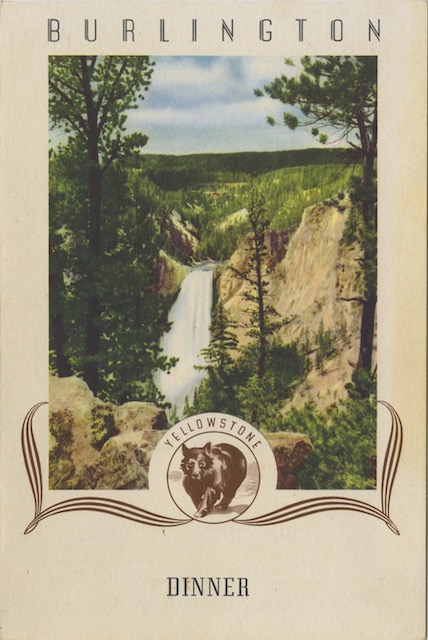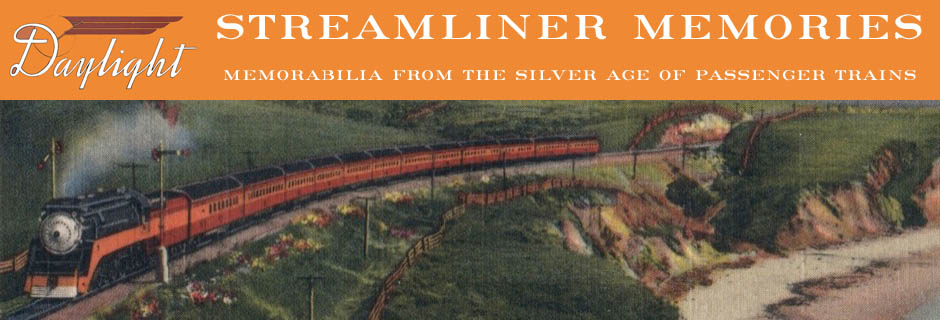In the immediate post-war years, Burlington issued menus featuring scenes from Glacier and Rocky Mountain national parks as well as other scenic areas along its route. This photo of Yellowstone Falls on this one seems to be accompanied by a drunken bear, or possibly an overweight wolf.
 Click image to download a 768-KB PDF of this menu.
Click image to download a 768-KB PDF of this menu.
Burlington’s closest approach to Yellowstone was Cody, Wyoming, so it promoted the “Cody road” which opened in 1903. “It is an old and well-founded saying that ‘If you don’t see the Cody Road, you don’t see Yellowstone,'” claims the back of this menu. Obviously, that “saying” wasn’t any older than 1903, and since 84 miles of the Cody road is entirely outside of the park, it is hardly well-founded.
I’ve been on all of the roads into Yellowstone, and while they are all interesting the Cody road is one of the least spectacular. The most impressive view is of the Shoshone Dam, but people going to Yellowstone want to see natural features, not man-made dams and reservoirs that covered up those features.
Aside from the dam, the north road from Livingston is just as interesting as the Cody road. The south road through Teton National Park is far more stunning, though train riders would take that route only if they went by Chicago & North Western to Lander, which service ended in 1943. The West Yellowstone route served by the Union Pacific put people on the edge of the park as soon as they got off the train while Milwaukee Road’s approach to West Yellowstone went up the beautiful Gallatin Canyon. To me, the most exciting route is the Beartooth Highway from Red Lodge, followed closely by the Chief Joseph Highway, which is an alternate route from Cody or Billings.
